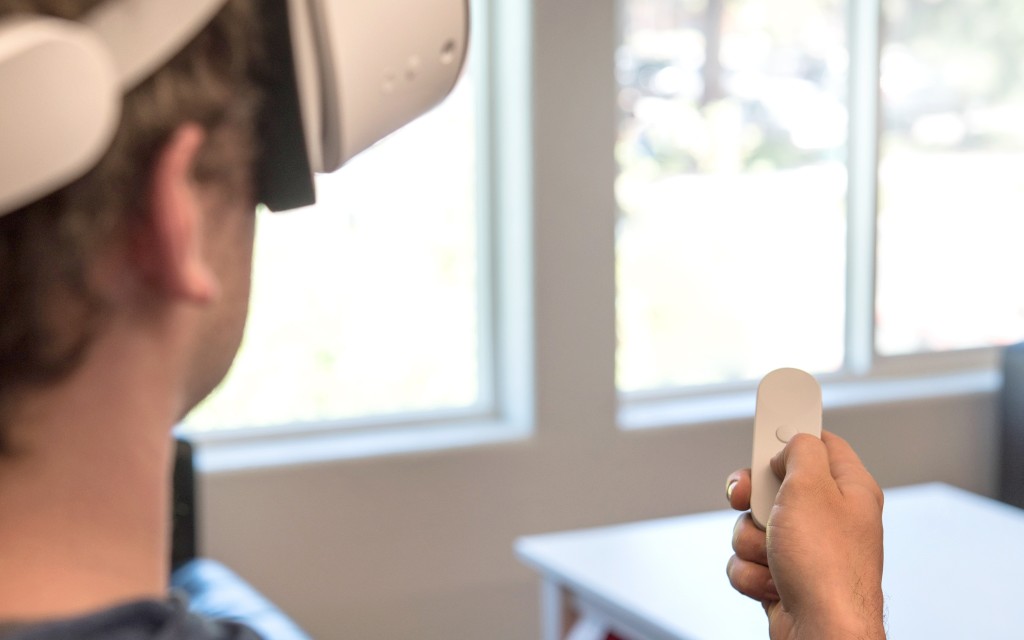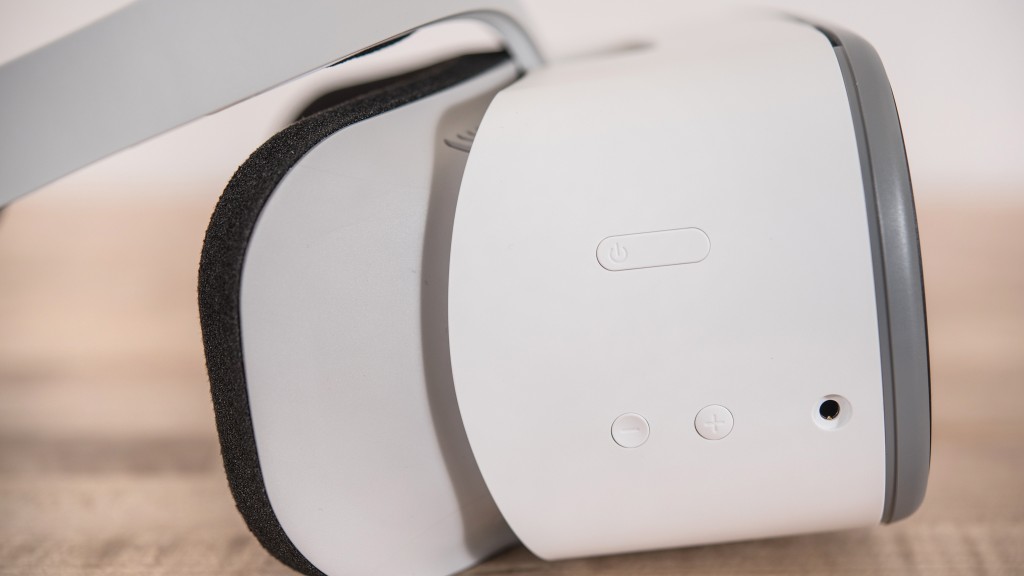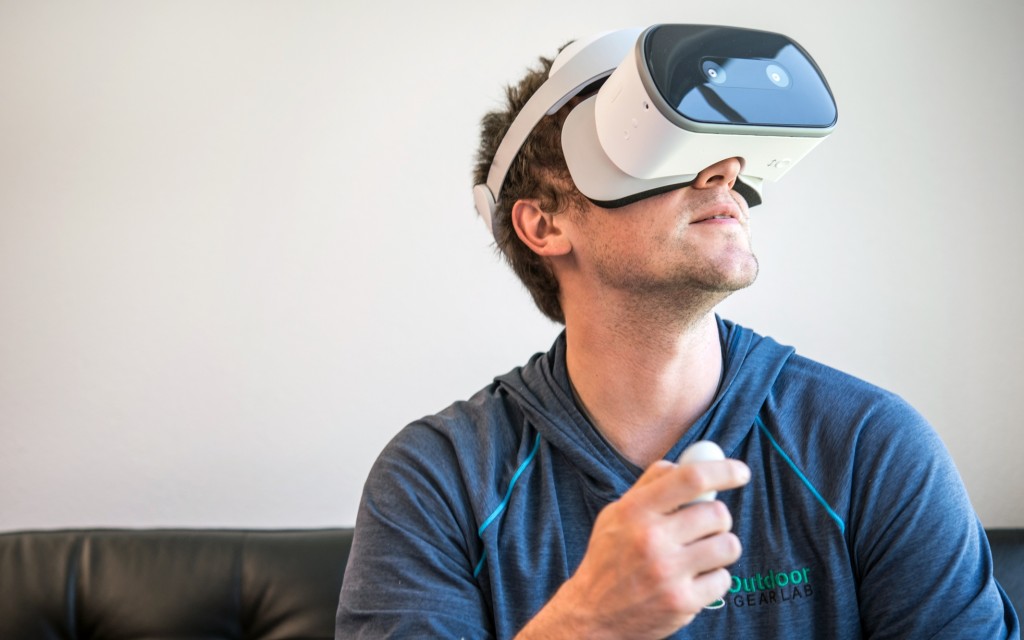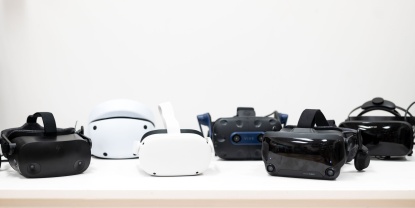Lenovo Mirage Solo Review
Our Verdict
Our Analysis and Test Results
The Mirage Solo scored right behind the Oculus Go and just ahead of the Samsung Gear VR. We found the Go is just a tiny bit easier to use on a daily base, but the initial setup process is a bit less of a hassle with the Solo. The Gear VR is quite a bit less interactive, but is a bit more comfortable than either of the standalone VR headsets. However, the Solo costs three times the price of the Gear VR and double that of the Go, putting it at about the same cost as the Oculus Rift — a superior tethered headset, but it does require a high-end ($800-$1000) computer to run.
Performance Comparison
To determine which wearable is really worthy of the title of Best VR Headset, we bought all the most promising candidates currently available and compared their performance side-by-side. We divided our testing process into five weighted testing metrics — Interactiveness, Ease of Setup, Comfort, Visual Immersiveness, and User Friendliness — assigning each headset an overall score from 0-100, with the Mirage Solo's full results discussed below.
Interactiveness
Comprising the most weight out of any of our metrics, our Interactiveness metric is accountable for 35% of the total score for each of these wearable headsets. We evaluated and scored the various ways to interact with each device and the accuracy of the motion tracking, as well as the various limitations on the use of each headset. The Mirage Solo did reasonably well, meriting a 6 out of 10 for its performance.
It's about average to interact with this headset, sharing the same remote as the Google Daydream View. This remote is relatively ergonomic and has a touchpad with a button, as well as a "Back" and "Home" key. However, we did notice the absence of a trigger button.
This headset also has some rudimentary controls right on the device, namely the power button, as well as volume control keys.
The Mirage Solo does have 6-DOF motion tracking, meaning you can physically move around while wearing the headset, rather than being forced to remain stationary. However, you only have an area of around 10-15 sq. ft. to move about in before the headset will stop you and tell you to move back. We did find the motion tracking of your movement using Google WorldSense to be quite accurate, but we weren't that enamored with the remote, finding that we had to reset it to center quite frequently and was overall a bit finicky compared to some of the other products.
Visual Immersiveness
Next, we judged the overall viewing quality and how well each headset blocked out ambient light, as well as compared the resolution and field of view of each headset to determine how visually immersive each product it, which together account for 20%. The Mirage scored very well, earning an 8 out of 10 for the exceptionally immersive VR environment it can create.
This headset lets in almost no ambient light — even when worn with glasses. The Mirage also has an excellent 5.5" display that overall looks great, with a resolution of 1280x1440 per eye. It also has one of the wider fields of view, measuring in at around 110° — matching that of the top headsets.
We also didn't notice any lag or latency — expected, as this product is designed for use with VR, rather than relying on a smartphone and all of its associated background processes.
Comfort
One of the fastest ways to ruin a VR experience is an uncomfortable headset, so the set of tests that define our comfort metric account for 20% of the total score for each product. We wore each headset for long periods of time, noting any uncomfortable pressure points and assessing if there was adequate ventilation to keep from getting overly sweaty. Additionally, we also tried on each headset while wearing glasses to see if there was sufficient room for those that need spectacles. The Mirage Solo again scored very well, earning a 7 out of 10 for its top-notch comfort.
This model is quite comfortable to wear for long periods of time, with more than sufficient padding to prevent any pinch or pressure points, but we did notice that this headset is a little on the heavier side and you can definitely feel its heft in your neck after wearing it for a while. You can adjust the strap using the dial on the back and then move the headset around slightly to get the proper focal adjustment.
We did like that there is plenty of room for most styles of glasses, but we wished there was a little more ventilation — your face can definitely get quite sweaty while wearing the Mirage, especially if it's warm out!
User Friendliness
For this metric, we assessed and compared how much work it took to get the headset ready to go each time you wanted to use, scoring each one on the frequency of accidentally hitting a button, the time it took to get ready, and the difficulty in connecting a pair of headphones. The Mirage again continued to deliver solid results, earning an 8 out of 10.
It is quite easy to connect headphones to the Mirage, with the standard 3.5 mm headphone jack conveniently located right on the side of the headset.
However, we were a bit disappointed that the Mirage lacks built-in speakers, forcing you to rely on earbuds, which can get a little annoying as you move around. This is the only thing you need to do to set up the Mirage and this can even be omitted if you don't care about using VR experiences with sound, making it one of the easiest headsets to get ready to use. Additionally, it is almost impossible to accidentally hit buttons on this headset when in use.
Ease of Setup
For the last metric in our test, responsible for 10% of the total score, we graded the difficulty of the initial unboxing and installation of each headset, looking at both the hardware and software, as well as the amount of additional required hardware to run them. The Mirage finished out with an exceptional showing, meriting one of the best scores we have seen to date, a 10 out of 10.
This product has almost no hardware set up, just plug in headphones and pop in a microSD card (up to 256 GB) if you want the extra storage. The unit we purchased arrived at about 90% charge, but you may have to charge it first. You don't need any other hardware outside the box and the software setup is a breeze, just requiring you to pair the remote and connect to WiFi. We did get a few error messages when pairing the remote, but it only took a few extra tries to connect it successfully.
Value
While the Mirage did score quite well overall, it isn't really a great bargain option, being much more expensive than other standalone or mobile headsets and not really performing that much better, or in the case of the Oculus Go, worse.
Conclusion
While we didn't find any major reasons to dislike the Mirage in terms of its performance, its price did cause us to pause. It costs twice that of the Oculus Go and isn't any better, putting it in the same price range as the higher-end tethered headsets, which we vastly prefer. However, these headsets require a decent amount of (expensive) additional hardware to run, which can make them much more expensive if you don't already have a gaming computer. We would recommend going with one of the tethered models if you already own the additional hardware, or sticking with a less expensive model if you don't, like the Oculus Go, Samsung Gear VR, or the Google Daydream View.














